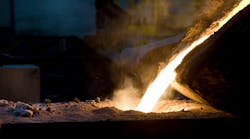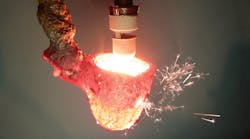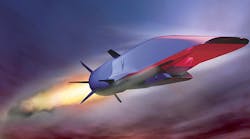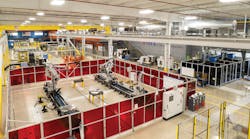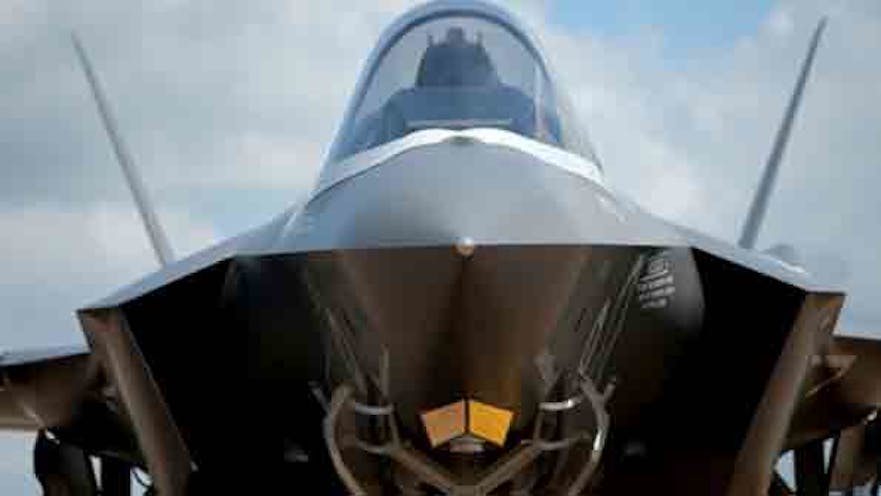The F-35 Lightning II, with its Electro-Optical Targeting System positioned below the pilot at the front of the fuselage, and shielded by a sapphire glass window.
The Electro-Optical Targeting System (EOTS, pronounced “ee-otz”) for the F-35 Lightning II is a lightweight, multi-function system that performs precision air-to-air and air-to-surface targeting for the stealth-equipped combat aircraft. The low-drag, stealthy EOTS is integrated into the F-35’s fuselage, shielded by a sapphire glass window and linked to the aircraft's integrated central computer through a high-speed fiber-optic interface.
Electro-optical systems use a combination of electronics and optics to generate, detect, and/or measure radiation in the optical spectrum. Lasers are commonly used as part of EO systems and can emit radiation from the entire the optical spectrum, including as a targeting tool for missiles, with the emitted radiation being scattered by the target. Scattered radiation is detected by the missile as it enters the general vicinity of the target, and can be used to give the missile a more accurate read on the location.
The F-35 EOTS system is housed in a lightweight beryllium-aluminum structure, a material selected because of its “specific stiffness,” i.e., the material’s elastic module divided by its density, which results in a light but remarkable stable structure that supports the system’s requirement for stability in the critical task of locating, sighting, and fixing a target on the fast-moving jet.
According to the developers, the F-35’s EOTS is first sensor to combine forward-looking infrared and infrared search and track functionality, thereby enhancing the pilots’ situational awareness, and allowing aircrews to identify areas of interest, perform reconnaissance, and deliver laser and GPS-guided weapons with precision.
Lockheed Martin confirms it has delivered more than 130 systems for the F-35 Lightning II.
The beryllium-aluminum structure, originally milled from ingots produced from powder metals and formed by hot isostatic pressing, has been converted to a series of investment castings designed by Lockheed Martin and two foundries — IBC Engineered Materials and Materion Brush Beryllium & Composites.




